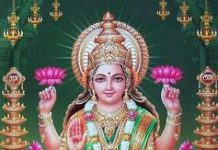In the ancient land of India, where spirituality and mythology have seamlessly intertwined for millennia, the Peepal tree (Ficus religiosa) has been revered as an emblem of divinity. The Peepal tree, recognized by various names such as the Bodhi tree, Pimple tree, Peepul tree, Pipala tree, Ashvattha tree (in India and Nepal), or Asathu in Sinhala. Embedded deeply in Hindu mythology, this sacred tree holds a special place in the hearts and minds of millions of devotees. From its majestic appearance to its profound spiritual symbolism, the Peepal tree stands as a timeless witness to the spiritual practices and beliefs of generations past and present.
Origin in Mythology:
According to Hindu mythology, the Peepal tree has a celestial origin that dates back to the churning of the cosmic ocean (Samudra Manthan) by the Devas (gods) and Asuras (demons). It is said that during this epic event, divine nectar (Amrit) emerged, capable of granting immortality. The gods, wary of the demons obtaining this elixir, sought the assistance of Lord Vishnu, who transformed himself into the Peepal tree to hide the precious nectar. Since then, the Peepal tree became a symbol of divine presence and protection, holding profound spiritual significance.
The Sacred Trinity: Brahma, Vishnu, and Shiva:
In Hinduism, the Peepal tree is often associated with the sacred trinity of gods – Brahma, Vishnu, and Shiva. Each part of the tree is believed to embody one of the deities. The roots represent Brahma, the creator of the universe; the trunk symbolizes Vishnu, the preserver and sustainer; and the leaves signify Shiva, the destroyer and the source of transformation. Worshiping the Peepal tree is seen as a way to seek blessings from the divine trinity and to gain their favor for a prosperous life.
A Seat of Wisdom and Knowledge:
Legend has it that Lord Buddha attained enlightenment under the shade of a Peepal tree, which was known as the Bodhi tree in his context. This association has further elevated the significance of the tree as a seat of wisdom and knowledge. As a result, many seekers of truth and knowledge sit under the Peepal tree to meditate and seek spiritual enlightenment.
Symbol of Immortality and Reincarnation:
Hinduism embraces the concept of reincarnation, where the soul transcends from one body to another after death. The Peepal tree is believed to hold the essence of immortality, as it sheds its leaves but never dies. This characteristic has led to the tree being associated with the cycle of birth, death, and rebirth, emphasizing the eternal nature of the soul.
Rituals and Customs:
Peepal tree worship is an integral part of Hindu customs and rituals. Devotees often circumambulate the tree while offering water, flowers, and incense. Tuesdays and Saturdays are considered particularly auspicious for Peepal tree worship. It is also believed that performing religious ceremonies or offering prayers under the tree can bring blessings, good fortune, and prosperity.
Healing Properties and Environmental Benefits:
Apart from its spiritual significance, the Peepal tree holds medicinal properties in traditional Ayurvedic medicine. Its leaves, bark, and roots are used to treat various ailments. Additionally, the tree plays a crucial role in the environment, releasing oxygen during the night, making it an essential part of the ecosystem.
The Peepal tree’s significance in Hindu mythology and spirituality is a testimony to the deep-rooted reverence for nature and its connection to the divine in Indian culture. As a symbol of immortality, knowledge, and divine protection, the Peepal tree continues to inspire countless individuals on their spiritual journeys. Amidst the modernization and technological advancements, the age-old tradition of Peepal tree worship stands as a reminder of the enduring spiritual heritage of India, nurturing faith, wisdom, and harmony with nature.


























































